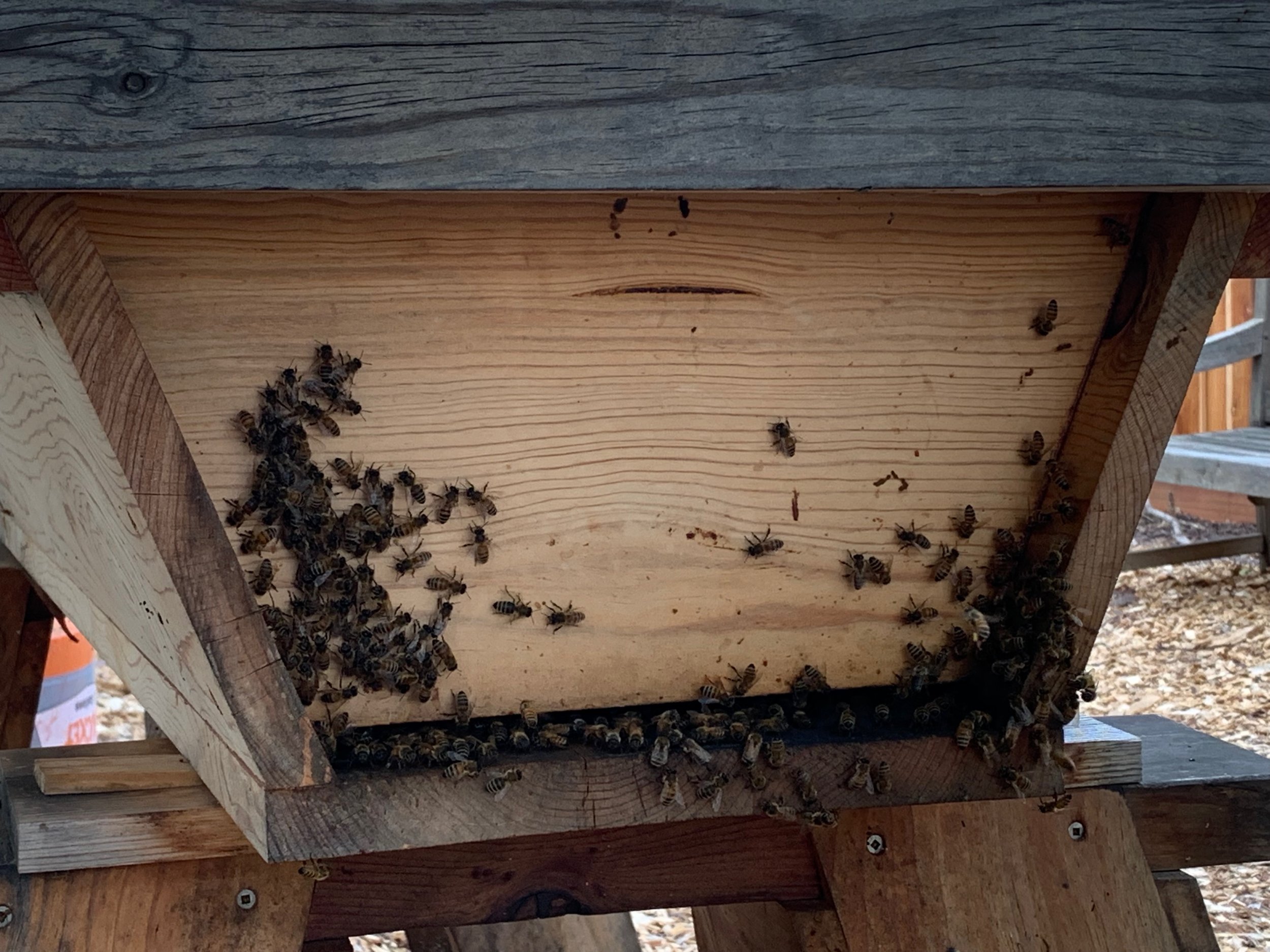Another guest post from Tom today…
Having chickens and compost in our suburban setting has put us into a situation where we’re fending off varmints – specifically, rats. I’ve written about our rat trapping efforts before (see The RRZ and RRZ Part Two), and our rat situation is pretty cyclic – we start noticing evidence of them, I get a little more diligent about setting up the traps, we trap a few, and then the trapping slows down and we don’t see as much of them again.
We’ve got a variety of hawks and owls in the neighborhood, and while we’ve not necessarily seen them making off with any rats, we figure that they’re also helping to keep the rat population in check (one of the reasons we’ve stuck with snapping traps and not poison). I’m not sure where we heard this, but the phrase “you don’t have a rat problem, you’ve got an owl deficiency” has been in our heads, and so this winter I did some research into nesting boxes for owls.
You can find bird box plans all over the internet. My most trusted source of all things bird is the Cornell Lab of Ornithology. They’ve got a specific site, Nestwatch, that has instructions and plans for bird boxes for all kinds of species of birds. The information is excellent – in addition to plans, they’ve got advice on how high up to put a box, which direction to face it, whether a specific bird is going to nest in your area of the country (and when), etc. (Note: downloading specific plans requires you to enter an email address, which I always find a little concerning (please no newsletters!), but it’s been okay).
After quite a bit of looking and thinking and perseverating, I decided to start off small, making a couple of boxes for some of the smaller birds that frequent our yard. The Nestwatch site has a single plan for a series of smaller birds we see – Bewick’s wrens, nuthatches, chickadees, and the oak titmouse – with the only real difference being the size of the hole in the front. I found that I could make the whole box from a single piece of simple 5-foot 1”x6” cedar fence board. No real special tools required – I used a circular saw to make all the cuts, including the few angled ones. Total cost was maybe $10-20, and a couple of hours of effort. I think they turned out good:
The top is angled to let rain run off, and the gap on the side is intended to keep the box cool when the weather heats up. There’s a little hinged side that’s screwed in securely, but will allow for cleaning out the box at the end of the nesting season. You can’t see it from this picture, but the bottom has some small holes in the corners to let any water that gets inside to drain out.
With these smaller boxes proving that this kind of build is within my grasp, I set off to make a larger box for a western screech owl. This box was going to need to be bigger – about 12” wide, 9” deep, and 18” tall. After kicking around our local home supply store a bunch, thinking about how much I wanted to invest in this and what size boards I could fit in the car, I decided to try using that same 1”x6” cedar fence board, gluing them up to make boards of a sufficient width, This proved to be a little tricky – I wound up using a LOT of clamps, as well as some internal bracing to hold things together, but overall I think it turned out okay. I got the box put up in our catalpa tree yesterday before the rain started again:
Overall a pretty similar design - it’s just a box with an angled roof and a hinged side. It was a little tricky getting it put up in the tree - that branch looks vertical from our bedroom window but in fact curves quite a bit.
I have no real sense of whether we’ll be successful in hosting any bird families at all this spring. We’re set up for success – they’re in the right place, they’ve got the right dimensions – but you never know. We heard a great horned owl outside the house last night, and while they don’t use nest boxes (they tend to just take over someone else’s big stick nest), we feel like this was a good omen.
“But what about nest cameras?,” you ask. “Don’t you want to host the Poppy Corners owl box live stream?” Yes, gentle reader, you can be assured that I spent quite a bit of time looking into ways that we could get owl baby video online - the Nestwach site has a whole section on this. In the end, it seemed like a bit of a pricey proposition, and kind of a pain — running an ethernet cable out so that we could be assured of good connectivity, dealing with lighting and power, etc. If we do have owls set up shop, I’ll try to figure out a way to rig up our trail camera to get some pictures.
If you’re looking for a good weekend project, I’d encourage setting up some nest boxes!














